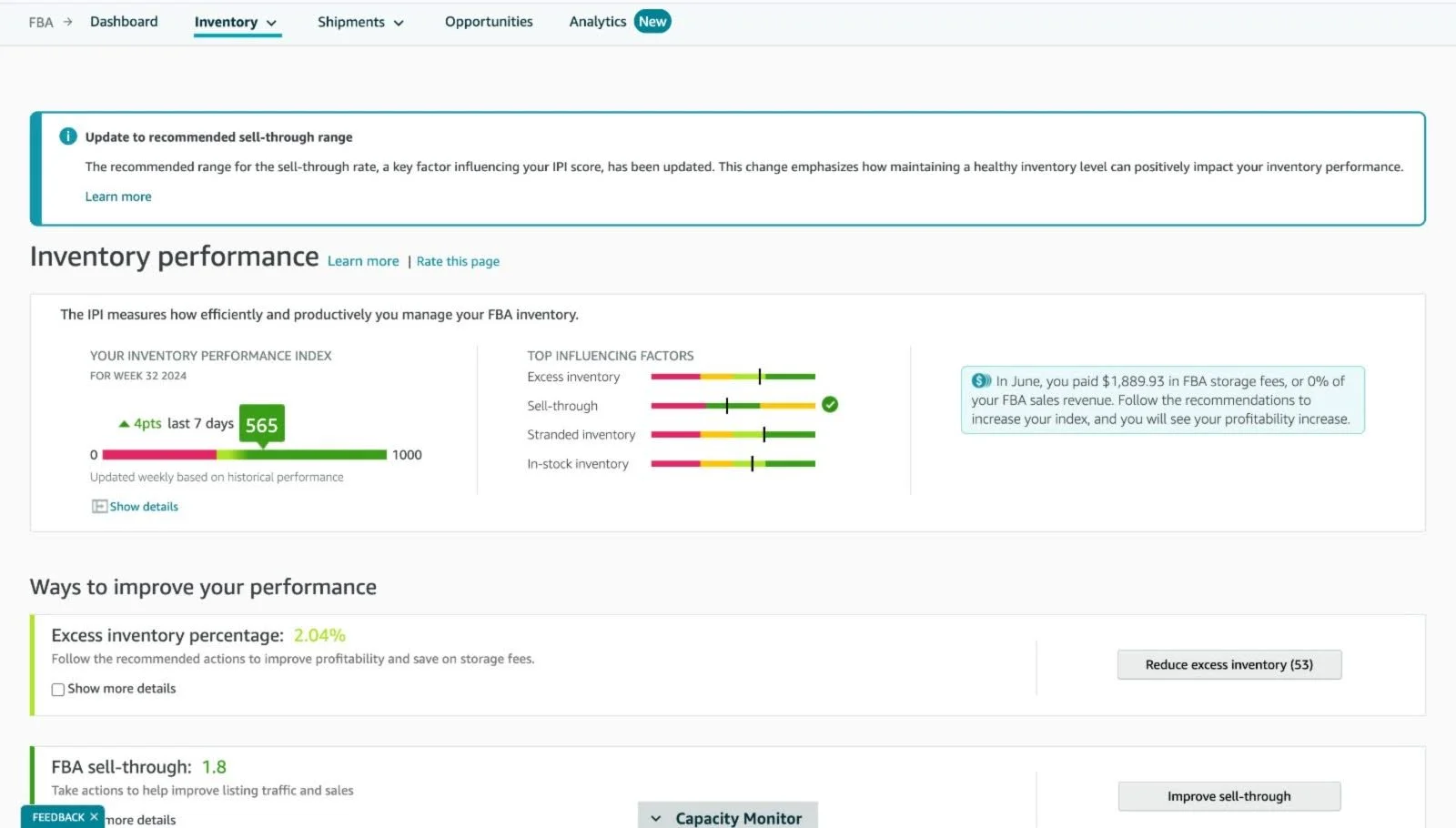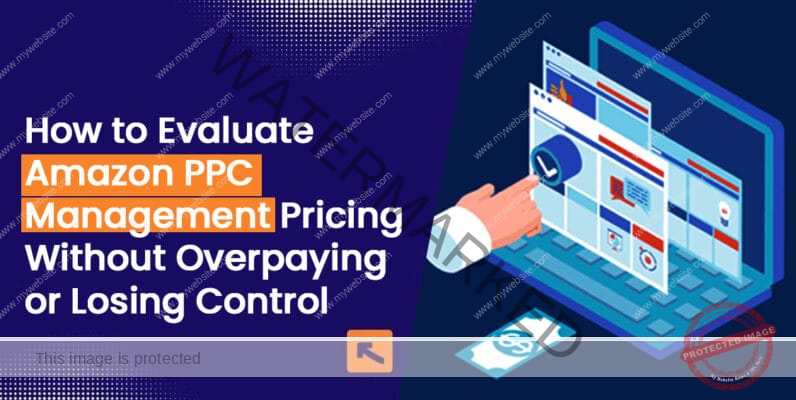Have you ever had a best-selling product that you couldn’t keep in stock because of Amazon’s quantity limits? If you’re a third-party seller on Amazon, this scenario might be all too familiar. Managing inventory is already a balancing act, but when Amazon imposes quantity limits, it can feel like walking a tightrope. The good news is that with the right strategies, you can navigate these restrictions and keep your business running smoothly in 2024.
In this guide, we’ll break down what Amazon’s quantity limits mean for your business and how you can effectively manage them to ensure your products remain available for customers.
Understanding Amazon Quantity Limits
What Are Amazon Quantity Limits?
Amazon quantity limits refer to the maximum number of units a seller can send to Amazon’s Fulfillment by Amazon (FBA) warehouses for each product (ASIN). These limits are part of Amazon’s inventory management system, aimed at optimizing storage space while prioritizing fast-moving products.
As of 2024, Amazon determines these limits based on your Inventory Performance Index (IPI) score and storage type. For example:
- Standard-size storage: Sellers typically face limits between 1,000 and 10,000 units per ASIN, depending on their sales velocity and IPI score. Learn more about FBA size limits from AMZ experts.
- Oversize storage: For larger products, limits are generally lower, often ranging from 500 to 5,000 units.
- Apparel and footwear: These categories may have distinct limits, usually starting at 1,000 units per ASIN.
Amazon dynamically adjusts these limits based on factors like seasonal demand, sales velocity, and fulfillment center capacity. If your IPI score drops below the threshold (typically 450), you may face tighter restrictions, potentially limiting your ability to send additional stock.
While this system helps Amazon maintain warehouse efficiency, it can be challenging for sellers who need consistent stock to meet customer demand, especially during peak sales periods.
Optimizing Inventory Limits and Improving IPI on Amazon
Navigating Amazon’s inventory restrictions and enhancing your Inventory Performance Index (IPI) requires an understanding of two key types of limits: account-level and ASIN-level restrictions.

Addressing challenges such as slow-moving inventory or high return rates is essential. You can take steps like refining product listings, consistently tracking performance metrics, and adopting strategies to boost your IPI. These may include maintaining optimal stock levels, avoiding oversupply or shortages, and ensuring prompt order fulfillment.
By strategically managing both your inventory and IPI score, you can drive sales growth despite Amazon’s stock limits.

Understanding Account-Based and ASIN-Based Limits
Amazon sellers must grasp the difference between account-wide restrictions and limits specific to individual products (ASINs) to manage stock effectively under Amazon’s system.
Account-Level Restrictions
These limits govern the total inventory quantity you can send to Amazon’s fulfillment centers. They depend on your past sales performance and the current space availability at Amazon’s warehouses.
ASIN-Level Restrictions
These are product-specific limits. Amazon assesses demand and sales pace for each ASIN, adjusting restrictions to avoid overstocking slower-selling products.
You can find your overall account limits in the Seller Central dashboard under “Manage Inventory.”
For ASIN-specific restrictions, sellers can view them through the Restock Inventory page or via the Restock report in Seller Central.
If a seller frequently sends more stock than necessary, their account-based limit may decrease, leading to higher storage costs and a dip in IPI scores. Conversely, products with fast sales will likely see higher ASIN-specific capacity limits through Amazon’s updated FBA management system.
How to Increase Your IPI Score
To improve your IPI and avoid inventory restrictions, follow these key approaches:
- Enhance Product Listings: Use engaging, clear product descriptions, along with high-quality images and targeted keywords to increase visibility and sales with best SEO practices.
- Balance Your Stock: Avoid both overstocking and running out of stock. Regularly monitor sales and adjust your restocking process accordingly.
- Handle Excess Inventory Smartly: If you have unsold products, consider offering discounts or promotions to clear space for faster-moving items.
- Improve Fulfillment Accuracy: Streamline your packing, shipping, and delivery processes to avoid errors and reduce returns, improving customer satisfaction.
- Fix Listing Issues: Regularly check for stranded inventory—products that can’t be sold due to listing problems—and resolve issues quickly to ensure all stock is available for purchase.
- Optimize Supply Chain: Work closely with suppliers and shipping partners to ensure timely product delivery, minimizing the chance of stockouts or delays, which positively impacts your IPI score.
Strategies to Manage Amazon Quantity Limits
1. Optimize Inventory Turnover
One of the most effective ways to handle Amazon’s quantity limits is to focus on optimizing your inventory turnover. This means selling through your inventory quickly and efficiently, which can lead to Amazon increasing your limits.
- Prioritize High-Demand Products: Focus on sending your best-selling products to Amazon’s fulfillment centers. Products with a higher turnover rate are less likely to face strict quantity limits.
- Analyze Sales Data: Use Amazon Seller Central’s sales reports to identify trends in your inventory performance. Look for products with slower sales and consider removing or discounting them to free up space for better-performing items.
2. Utilize Fulfillment by Merchant (FBM)
When Amazon’s quantity limits prevent you from stocking enough inventory through Fulfillment by Amazon (FBA), consider using Fulfillment by Merchant (FBM) as a complementary strategy.
| Fulfillment by Amazon (FBA) | Fulfillment by Merchant (FBM) | |
| Advantages | – Prime Eligibility: Products are eligible for Amazon Prime, attracting more customers. – Amazon Handles Logistics: Amazon manages storage, packing, and shipping. – Customer Service: Amazon handles customer service and returns. – Scalability: Easy to scale as Amazon handles increased order volume. | – Control Over Fulfillment: Sellers have full control over inventory and shipping processes. – Lower Fees: Avoid FBA fees, potentially saving money on fulfillment costs. – Flexible Storage: No limits on inventory storage, allowing for larger or specialized stock. – Customized Service: Sellers can offer personalized packaging and service. |
| Disadvantages | – Cost: FBA fees include storage and fulfillment fees, which can add up. – Inventory Limits: Subject to Amazon’s quantity limits and policies. – Less Control: Limited control over packaging and shipping processes. – Long-Term Storage Fees: Fees for inventory stored beyond a certain period. | – Shipping Responsibility: Sellers must manage their own shipping, which can be time-consuming. – Customer Service: Sellers handle customer service and returns, increasing workload. – No Prime Eligibility: Products are not eligible for Amazon Prime, potentially limiting customer reach. – Scalability: Harder to scale as order volume increases. |
| Ideal Scenarios | – High-Volume Sales: Ideal for products with high sales volume, benefiting from Amazon’s logistics network. – Prime Customers: Suitable for sellers looking to reach Amazon Prime members. – FBA-Friendly Products: Best for products that fit well within Amazon’s warehousing and logistics capabilities. | – Niche Products: Suitable for specialized or niche products that may not benefit from FBA’s broad logistics. – Cost-Conscious Sellers: Ideal for sellers looking to save on fulfillment costs. – Custom Fulfillment: When sellers need to offer custom packaging or personalized services. – Low Turnover Inventory: Ideal for products with slower turnover rates or seasonal items. |
- Diversify Fulfillment Methods: By splitting your inventory between FBA and FBM, you can continue to sell products even when your FBA stock runs low. This approach helps you maintain sales velocity and customer satisfaction.
- Monitor Shipping Performance: If you choose to fulfill orders yourself through FBM, ensure that your shipping performance meets Amazon’s standards to maintain your seller rating. Consider using Amazon’s Seller Fulfilled Prime program to offer Prime shipping on your FBM orders.
3. Monitor Inventory Performance Index (IPI)
Your Inventory Performance Index (IPI) score is a critical factor in determining your quantity limits and account health. A higher IPI score reflects efficient inventory management, which can lead to more lenient limits.
- Reduce Excess Inventory: Excess inventory can negatively impact your IPI score. Regularly review your inventory levels and consider removing or discounting slow-moving items to improve your score.
- Improve Sell-Through Rate: Your sell-through rate is the ratio of units sold to units stored. A higher sell-through rate indicates efficient inventory management, which can positively influence your IPI score and potentially increase your quantity limits.
Pro Tip:
Keep your IPI score above the threshold (typically 450) to avoid penalties and enjoy more flexible inventory limits.
4. Plan Ahead for Peak Seasons
Peak shopping seasons, such as Q4 or Prime Day, often come with increased demand, but also tighter inventory limits. Planning ahead is crucial to ensure you have enough stock to meet demand.
- Forecast Demand: Use historical sales data to forecast demand for your products during peak seasons. This will help you plan your inventory levels more accurately and avoid stockouts.
- Submit Inventory Early: During peak seasons, Amazon’s fulfillment centers can become overwhelmed with incoming shipments. To avoid delays, send your inventory to Amazon’s warehouses well in advance.

5. Leverage Third-Party Warehousing
If Amazon’s quantity limits are too restrictive, consider using third-party warehousing to store excess inventory. This allows you to maintain a buffer stock that can be quickly sent to Amazon when needed.
- Choose Reliable Partners: Look for third-party warehousing services that offer quick turnaround times and integration with Amazon’s fulfillment centers. This ensures that your inventory is readily available when needed.
- Balance Costs: While third-party warehousing can be an effective solution, it’s important to balance the additional storage costs with the benefits of maintaining consistent stock levels on Amazon.
Avoiding Common Pitfalls
Stockout Risk
Running out of stock can significantly impact your product’s ranking and sales. To avoid this, regularly monitor your inventory levels and set up alerts for low stock.
Learn more about the Essential Tips for Amazon Restock Inventory in 2024 to avoid stockouts, especially during peak sales season like Prime Day.
Overstocking
On the other hand, overstocking can lead to increased storage fees and tie up capital that could be used elsewhere in your business. Use inventory management tools to maintain the right balance.

Ignoring IPI Score
Your IPI score is more than just a number—it directly impacts your ability to store products at Amazon’s fulfillment centers. Make it a priority to monitor and improve this score regularly.
Conclusion
Amazon’s quantity limits can be challenging, but with the right strategies, you can navigate these restrictions and keep your business thriving in 2024. By optimizing your inventory turnover, utilizing FBM, monitoring your IPI score, planning for peak seasons, and leveraging third-party warehousing, you can ensure that your products remain available to customers, even during high-demand periods.
For expert guidance on managing your Amazon business, consider partnering with AMZDudes. Their experience in helping sellers optimize their operations can give you the edge you need to succeed on Amazon.
With these strategies in place, you can handle Amazon’s quantity limits with confidence and keep your business growing throughout the year.
Ready to master Amazon’s quantity limits and boost your sales in 2024?
Schedule a free consultation with AMZDudes now!




